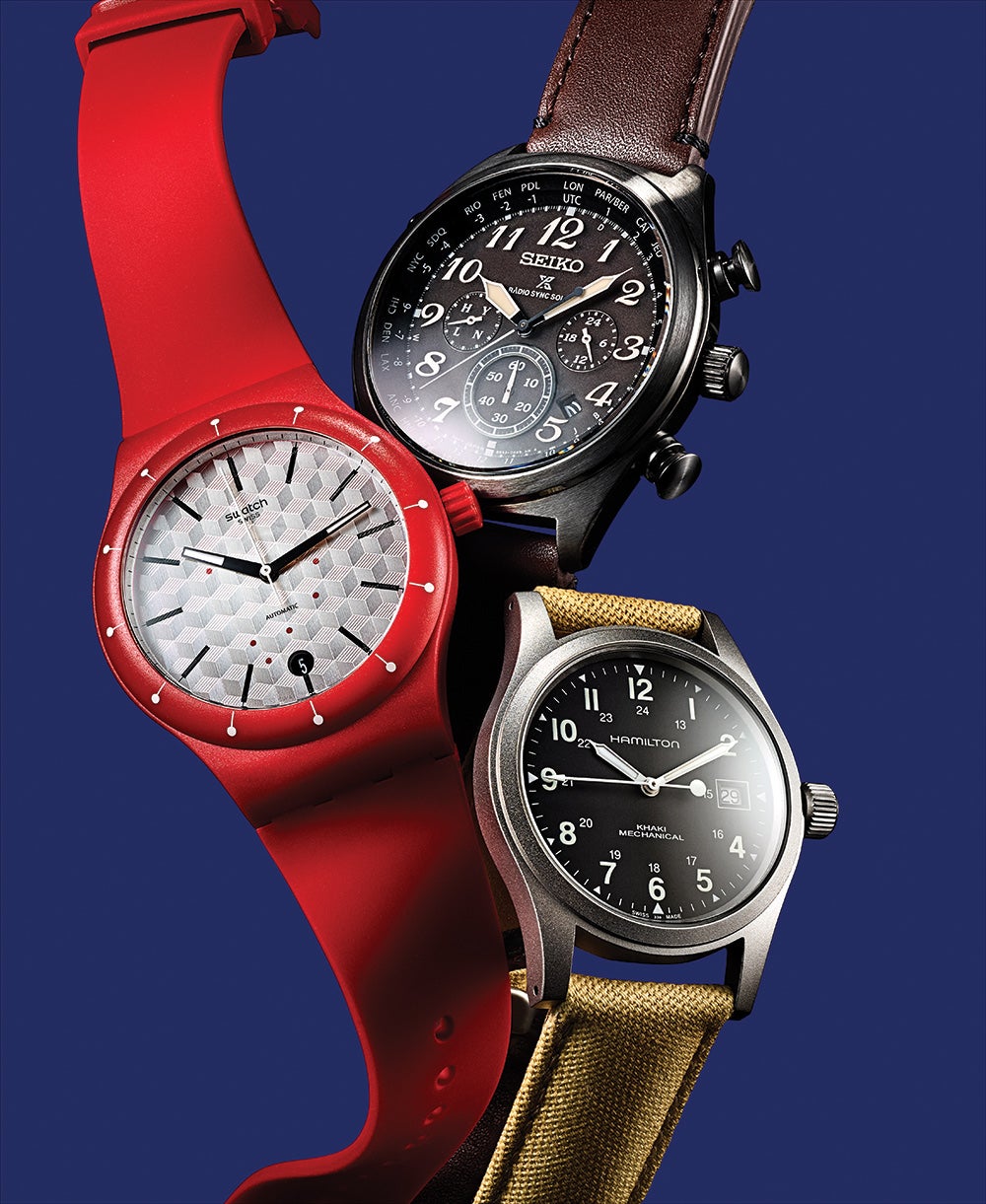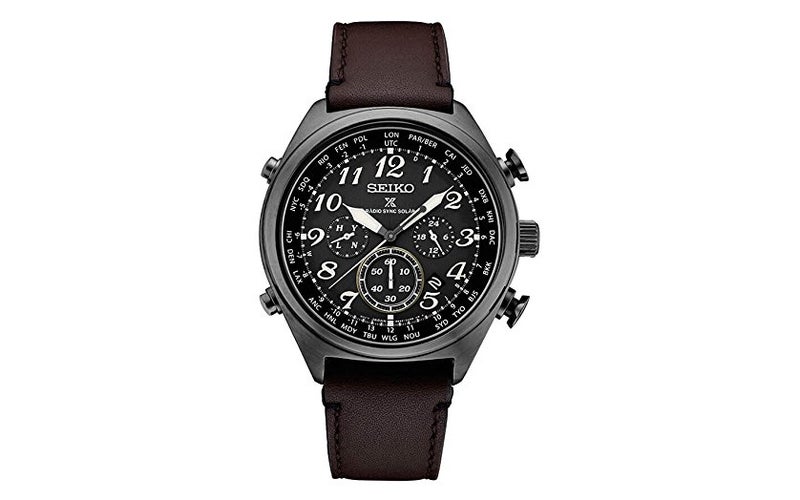These watches find plenty of power without lithium-ion batteries
Not everyone wants a smartphone on their wrist. These classic watches can help.

We may earn revenue from the products available on this page and participate in affiliate programs. Learn more ›
The Apple Watch is the most popular timepiece in the world, but not everybody wants to check email on their wrist or remember to plug in their chronometer every night to charge. For those folks, these elegant, accurate wearables use clever, time-proven energy sources to run their movements and keep ticking for years.
Swatch
Your wrist moves as you walk, type, or play Xbox. That jostling spins a circular rotor inside the Swatch Sistem51, winding a spring. As it uncoils, the coil whirls the movement inside the watch. Similar timepieces have more than 100 parts and prices beyond four figures, making this timepiece’s 51-piece innards and $150 sticker a lovely rarity.
Seiko
The Seiko Prospex is a self-sufficient timepiece. A solar cell under the dial constantly tops off its built-in battery, which stores enough charge to last six months in the dark. The watch also sets itself to the correct time by receiving radio signals from cesium atomic clocks around the world that gain or lose roughly one second every hundred thousand years
Hamilton
Instead of twirling a fidget spinner, rotate the crown of the Hamilton Khaki Field Officer. Like an automatic watch, this mechanical timepiece has a spring as its engine; unlike one, it relies on you for winding. Roughly 30 seconds of twisting each day is more than enough to keep the hands continuously circling the 1.5-inch face.
This article was originally published in the January/February 2018 Power issue of Popular Science.



